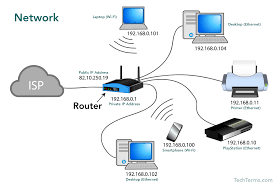The Importance of Community Resources
In every community, access to resources plays a vital role in fostering growth, resilience, and well-being among its residents. Community resources encompass a wide range of services, facilities, and support systems that contribute to the overall quality of life for individuals and families.
Educational Resources
Education is the cornerstone of personal development and success. Schools, libraries, tutoring programs, and educational workshops are essential community resources that empower individuals of all ages to learn new skills, pursue their passions, and achieve their academic goals.
Healthcare Services
Access to quality healthcare is crucial for maintaining physical and mental well-being. Community health centers, clinics, mental health services, and wellness programs provide residents with essential medical care, preventive services, and resources to promote a healthy lifestyle.
Social Support Networks
Building strong social connections is key to creating a sense of belonging and support within a community. Social service agencies, support groups, counseling services, and community centers offer individuals a network of peers and professionals who can provide emotional support, guidance, and assistance during challenging times.
Recreational Facilities
Recreation plays an important role in promoting physical activity, leisure time enjoyment, and social interaction. Parks, sports facilities, cultural centers, and recreational programs offer residents opportunities to engage in various activities that contribute to their overall health and well-being.
Employment Assistance
Access to job training programs, career counseling services, employment agencies, and vocational workshops helps individuals secure meaningful employment opportunities. By providing resources for skill development and job placement assistance, communities can empower residents to achieve financial stability and career advancement.
Conclusion
Community resources are the foundation upon which vibrant and resilient communities are built. By investing in accessible and diverse resources that cater to the needs of all residents, communities can create an environment where individuals thrive socially, economically, and emotionally. It is essential for community members to actively engage with these resources to maximize their benefits and contribute to the overall well-being of the community as a whole.
Unlocking Community Resources: 5 Essential Tips for Staying Informed and Connected
- 1. Research local community centers for programs and services available to residents.
- 2. Utilize public libraries for free access to books, internet, and community events.
- 3. Connect with local non-profit organizations for volunteer opportunities and support services.
- 4. Explore online platforms like Nextdoor or Meetup to find community groups with similar interests.
- 5. Attend town hall meetings or neighborhood gatherings to stay informed about local resources and issues.
1. Research local community centers for programs and services available to residents.
To make the most of community resources, it is advisable to research local community centers for the diverse range of programs and services they offer to residents. Community centers often provide valuable resources such as educational workshops, social support groups, recreational activities, and health services that cater to the needs of individuals within the community. By exploring these programs and services, residents can discover opportunities for personal growth, social engagement, and access to essential support systems that contribute to a stronger and more connected community overall.
2. Utilize public libraries for free access to books, internet, and community events.
Utilizing public libraries is a valuable tip for accessing a wide range of resources within the community. Public libraries offer free access to books, internet services, and community events, making them essential hubs for learning, information gathering, and social engagement. By taking advantage of these resources, individuals can expand their knowledge, enhance their literacy skills, and participate in enriching programs that contribute to personal growth and community connection. Public libraries serve as inclusive spaces that promote lifelong learning and foster a sense of belonging among residents from all walks of life.
3. Connect with local non-profit organizations for volunteer opportunities and support services.
Connecting with local non-profit organizations can be a valuable way to engage with community resources. By volunteering your time and skills, you not only contribute to meaningful causes but also build connections and support networks within your community. Non-profit organizations often offer a range of volunteer opportunities that cater to various interests and skill sets, allowing you to make a positive impact while gaining valuable experience. Additionally, these organizations may provide essential support services to individuals in need, further strengthening the fabric of the community.
4. Explore online platforms like Nextdoor or Meetup to find community groups with similar interests.
To enhance your access to community resources, consider utilizing online platforms such as Nextdoor or Meetup. These platforms offer opportunities to connect with local residents who share similar interests, allowing you to join community groups, attend events, and engage in activities that align with your passions. By exploring these online resources, you can expand your social network, discover new opportunities for collaboration, and enrich your overall community experience.
5. Attend town hall meetings or neighborhood gatherings to stay informed about local resources and issues.
Attending town hall meetings or neighborhood gatherings is a valuable way to stay informed about local resources and issues within the community. By actively participating in these events, residents can engage with local officials, community leaders, and fellow neighbors to learn about available resources, upcoming initiatives, and pressing concerns affecting the neighborhood. These meetings provide a platform for open dialogue, collaboration, and collective action to address community needs and foster a sense of unity among residents.


